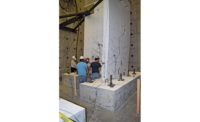The Charles Pankow Foundation, which, since 2006, has spent $7.4 million funding 42 mostly unrelated research projects, is switching gears. To improve construction practice, it will now focus on larger research concepts that could have an impact on all structures, not just buildings.
The group has picked high-strength reinforcing steel for its first wide-impact research program. The goal is to update the concrete code, which currently limits the use of higher-strength rebar in all types of structures.
Pankow also intends to fill a leadership gap in the world of research. "We are trying to get our hands around the issues and drive the agenda," says Richard M. Kunnath, president of the board of the private foundation, based in Vancouver, Wash.
The high-strength-rebar effort will consist of 20 to 30 discrete structural testing projects over five to 10 years at a cost of $10 million to $20 million. Pankow will seek support from many interested parties.
The group is focusing on high-strength rebar because the material reduces rebar congestion and enhances constructibility. Suppliers can produce 80 ksi or even 100 ksi rebar, but codes limit the use of rebar above 60 ksi because necessary structural testing has not been done.
Pankow's advisory board supports the group's new direction. "High-strength rebar is an ideal project," says Jack Moehle, a professor of engineering at the University of California, Berkeley. "It will be a challenging project ... one that requires an organization capable of sustained leadership."
Another advisory board member agrees. "The rebar project is the most important and valuable undertaking the Pankow foundation has done to date," says Glenn R. Bell, CEO of structural engineer Simpson Gumpertz & Heger, Boston. "The approach is brilliant—bite off a big issue in small steps and solve the right problem."
This article was updated on June 14, 2013.




Post a comment to this article
Report Abusive Comment